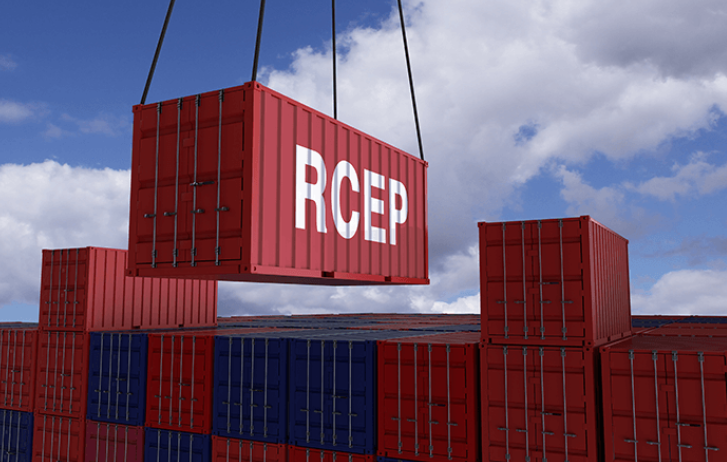
The RCEP Trade Deal Is Launching Vietnamese SMEs Globally
By Ee-Hui Tan | September 15, 2023
With the Regional Comprehensive Economic Partnership (RCEP) in full effect, we explore what the mega trade deal means for SMEs in Vietnam.
The Regional Comprehensive Economic Partnership (RCEP) came into effect on June 2, 2023 for all 15 member countries. Since its signing in November 2020, the RCEP has been promoting intra-regional foreign trade and economic development.
As an RCEP member, Vietnam is seeing steady growth in its imports and exports. In 2022, Vietnam’s trade-in-goods totaled US$730.2 billion, a 9.1% increase from the previous year. In the first six months of this year, its foreign trade volume reached US$316.65 billion.
With the RCEP coming into full force, Vietnam has much to gain with foreign trade poised to grow further and help boost the country’s economic development.
RCEP drives the development of regional trade
The RCEP is Vietnam’s 15th multilateral FTA and is the one with the largest population, the most diversified membership structure, and the greatest development potential. It covers about 30% of the world's population, economic volume and total trade.
As the members gradually fulfill their commitment to lower tariffs, open markets and reduced barriers to trade, the economic and trade relations in the region will become stronger, and the market potentials of most member countries will continue to be unleashed, which in turn will shore up regional trade in Asia.
Small and Medium-sized Enterprises (SMEs) in Vietnam have much to gain from the RCEP, especially with the high trade activity Vietnam has been enjoying, coupled with the government’s direction to support SMEs to participate in foreign trade.
SMEs make up 97% of all Vietnamese enterprises and are an essential part of Vietnam’s foreign trade. Benefiting from simpler customs procedures, better trade facilitation and lower traffic that come with the RCEP, these SMEs will embrace a broader space for development in the international market, and in turn bring new opportunities for the robust growth of foreign trade.
Streamlined customs procedures
The RCEP values SMEs’ contribution to economic growth and creates a favorable business environment for them. Through measures including pre-shipment inspection, pre-arrival processing and advance rulings, the RCEP streamlines customs procedures and speeds up customs clearance, enabling SMEs to participate in the regional supply chain and value chain more efficiently.
Tariff concessions to foster trade growth
One major benefit of the RCEP for SMEs in Vietnam would be the tariff concessions it offers which would lead to reduced import and export costs, with the RCEP agreement aiming to eliminate tariffs on over 90% of goods trading among its signatories, either immediately or within a 20-year period after the agreement comes into effect.
According to the World Bank, Vietnam is expected to experience the highest growth in exports among all member countries of the RCEP between 2020 and 2035, with a projected increase of 11.4%. Additionally, its imports are anticipated to grow significantly by 9.2% during the same period. Such projections further highlight the positive impact the RCEP is expected to have on Vietnam’s trade activities.
Furthermore, the World Bank has also predicted that the reduction in non-tariff measures from the RCEP is anticipated to drive substantial growth rates across numerous sectors in Vietnam including textiles (16.2%) and apparels (14.9%) between 2020 and 2035. This growth not only provides strong incentives for SMEs to expand globally but also contributes to Vietnam's ambitions of becoming a global manufacturing hub.
Unlocking opportunities across borders
The RCEP’s tariff reductions introduce significant advantages to Vietnamese SMEs seeking to expand their market presence through cross-border trade. Firstly, SMEs can effectively reduce their production costs by accessing more affordable raw materials from international sources.
Additionally, SMEs gain the ability to competitively price their products for foreign markets, eliminating the need to cover tariff-related expenses in their pricing.
However, these benefits are accompanied by challenges related to swift cross-border deliveries and the complexities of international transportation. To fully harness the potential of regional trade expansion, SMEs in Vietnam require the support of a professional and reliable cross-border logistics partner.
These partners can help SMEs unlock the benefits provided by the RCEP and navigate the intricate landscape of cross-border trade.
It is foreseeable that the RCEP will not only boost the prosperity of SMEs and the regional economy, but also facilitate closer ties between Vietnam and other member countries in a wide range of industries. As a firm advocate and facilitator of global trade, we at FedEx will continue to promote regional economic cooperation across the region.
SHARE THIS STORY
- How To Ship A Giant Panda
- How To Make Freight Shipments Work For Your Small Business
- The Rise Of Intra-Asia Trade: Opportunities In The China-Southeast Asia Corridor
- Southeast Asia: The Next Manufacturing Powerhouse?
- 8 Most Unusual Shipments In The History Of FedEx
- Where Do Old Planes Go When They Retire?
Sign up now and save on your shipping rates!
Sign up now and earn discounts by shipping instantly with FedEx Ship ManagerTM at fedex.com.
Recommended For You

Southeast Asia: The Next Manufacturing Powerhouse?
Vietnam is part of a growing number of production and supply hubs in Southeast Asia. We explore what makes Vietnam successful.
Read More
5 Reasons Why SMEs Should Look To Intra-Asia Trade
Intra-Asia offers immense opportunities for the region’s SMEs and e-commerce operators to unlock new business growth.
Read More
Walking In The Shoes Of A Filipino Footwear Designer
Filipino shoe designer and beauty queen favorite Jojo Bragais is using e-commerce to build an international brand and win overseas customers.
Read More

